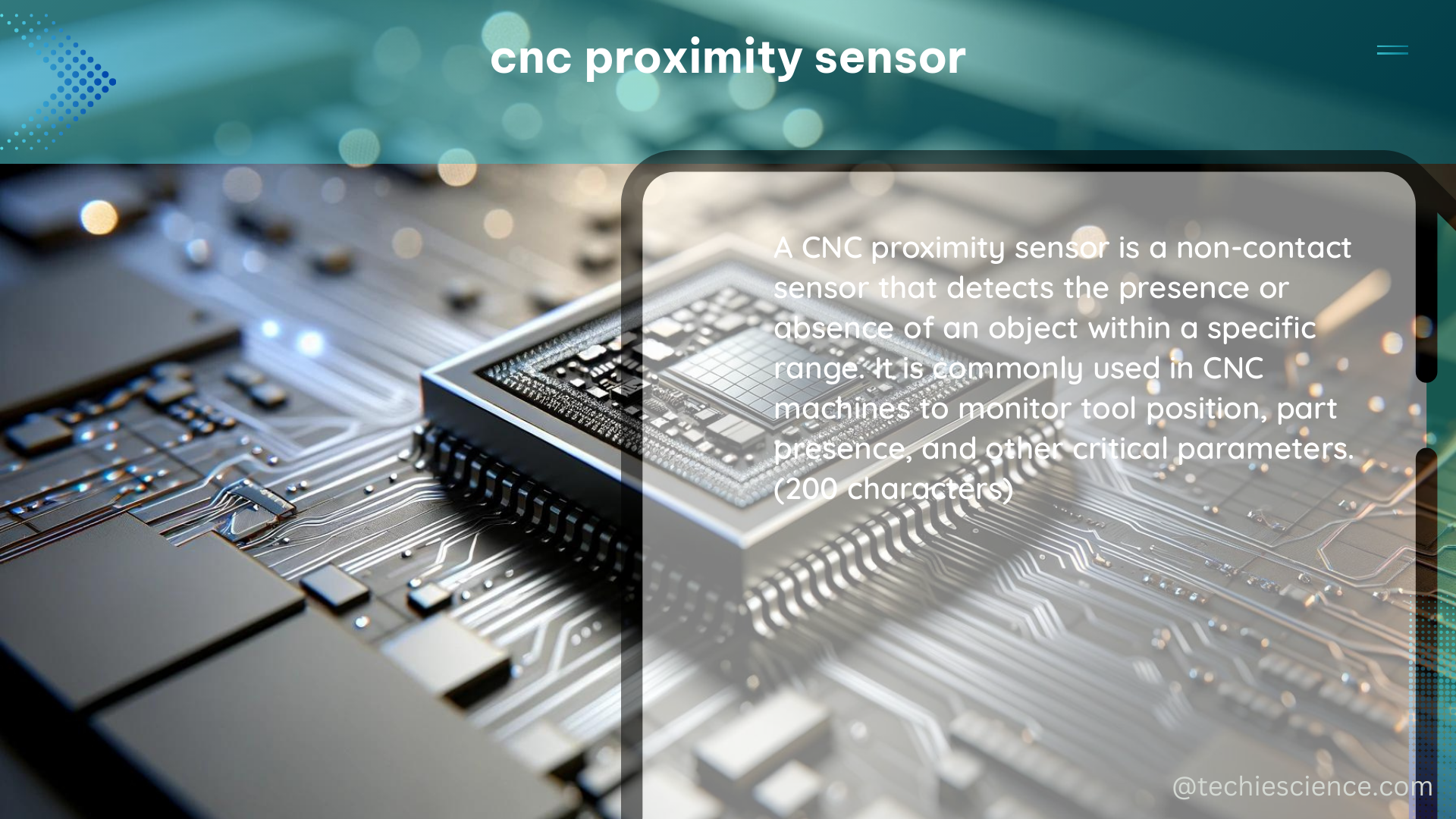CNC proximity sensors are essential components in modern manufacturing, providing precise and reliable measurements of distance and position. These sensors use electromagnetic or optical principles to detect the presence or absence of objects within their range, making them ideal for non-contact measurement in harsh environments.
Sensing Range and Precision
The sensing range of a CNC proximity sensor is a crucial specification, as it determines the maximum distance at which the sensor can reliably detect an object. High-end CNC proximity sensors can have sensing ranges up to 50mm, with a typical accuracy of ±0.1mm or better. For example, the Pepperl+Fuchs NBN8-18GM50-E2-V1 inductive proximity sensor has a sensing range of 0-50mm and a repeatability of ±0.1mm.
Sensing Principles

CNC proximity sensors can utilize different sensing principles, each with its own advantages and disadvantages:
-
Inductive Sensors: These sensors are typically used for detecting metallic objects. They work by creating an electromagnetic field and detecting changes in the field when a metal object enters the sensing range. Inductive sensors are known for their high reliability and long lifespan, making them a popular choice for industrial applications.
-
Capacitive Sensors: Capacitive sensors can detect both metallic and non-metallic objects. They work by measuring changes in the electrical capacitance between the sensor and the target object. Capacitive sensors are often used for detecting the presence of liquids, powders, or non-metallic materials.
-
Optical Sensors: Optical proximity sensors use light, typically infrared, to detect the presence of objects. They are well-suited for detecting transparent or non-metallic materials and can provide a faster response time compared to inductive or capacitive sensors.
Output Signals and Connectivity
CNC proximity sensors can provide either analog or digital output signals. Analog signals, such as 0-10V or 4-20mA, provide a continuous range of values, allowing for more precise position or distance measurements. Digital signals, on the other hand, provide discrete on/off signals, which are often used for simple presence/absence detection.
In terms of connectivity, CNC proximity sensors can be integrated with various industrial communication protocols, such as Profibus, DeviceNet, or IO-Link. This allows for seamless integration with CNC controllers and other industrial automation systems.
Response Time and Operating Temperature
The response time of a CNC proximity sensor is the time it takes for the sensor to respond to a change in the target’s position. Faster response times are generally preferred for high-speed applications, with some sensors achieving response times as low as 50 microseconds.
CNC proximity sensors are designed to operate in a wide range of environmental conditions, with typical operating temperature ranges from -40°C to +85°C. For example, the Balluff BES 516-300-S4-C-PU-03 inductive proximity sensor has an operating temperature range of -25°C to +70°C.
Mounting and Integration
CNC proximity sensors can be mounted in various ways, including threaded, magnetic, or through-hole mounting. The choice of mounting method depends on the specific application requirements and the sensor’s physical dimensions.
To integrate a CNC proximity sensor into a DIY project, one can consider using a microcontroller, such as an Arduino or Raspberry Pi, along with a compatible sensor module. For example, the Adafruit VL53L0X Time-of-Flight Distance Sensor Breakout can be easily interfaced with an Arduino board to create a custom proximity sensing solution.
Conclusion
CNC proximity sensors are essential components in modern manufacturing, providing precise and reliable measurements of distance and position. By understanding the key specifications, such as sensing range, sensing principle, output signal, response time, and operating temperature, users can select the most appropriate sensor for their specific application requirements. For DIY projects, integrating a microcontroller with a compatible sensor module can provide a cost-effective and customizable solution.
References:
- SEMI International Standards: Compilation of Terms. https://www.semi.org/sites/semi.org/files/2020-02/CompilationTerms1218_0.pdf
- DEPARTMENT OF DEFENSE SMALL BUSINESS INNOVATION RESEARCH (SBIR) PROGRAM FY 2024.2 BAA. https://www.dodsbirsttr.mil/submissions/api/public/download?fileName=DOD_SBIR_242_FULL.pdf&showOnWeb=true&uploadId=MTM3NTM2NA%3D%3D
- Industry-academia research collaboration and knowledge co-creation. https://arxiv.org/pdf/2204.14180
- Data Driven Cutting Tool Fault Diagnosis System Using Machine Learning Algorithms. https://iopscience.iop.org/article/10.1088/1742-6596/1969/1/012049
- Tool Condition Monitoring System: A Review. https://www.researchgate.net/publication/283900263_Tool_Condition_Monitoring_System_A_Review

The lambdageeks.com Core SME Team is a group of experienced subject matter experts from diverse scientific and technical fields including Physics, Chemistry, Technology,Electronics & Electrical Engineering, Automotive, Mechanical Engineering. Our team collaborates to create high-quality, well-researched articles on a wide range of science and technology topics for the lambdageeks.com website.
All Our Senior SME are having more than 7 Years of experience in the respective fields . They are either Working Industry Professionals or assocaited With different Universities. Refer Our Authors Page to get to know About our Core SMEs.